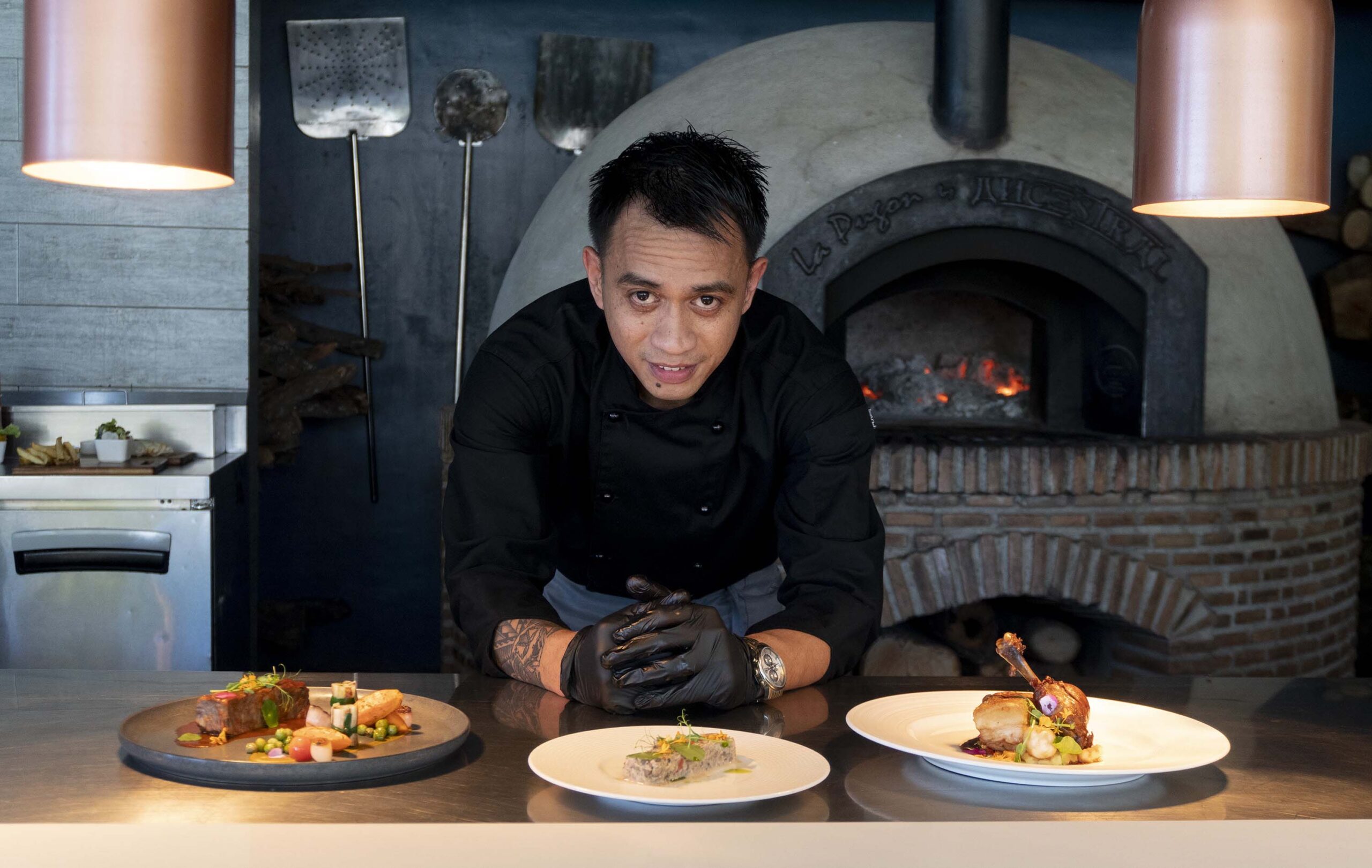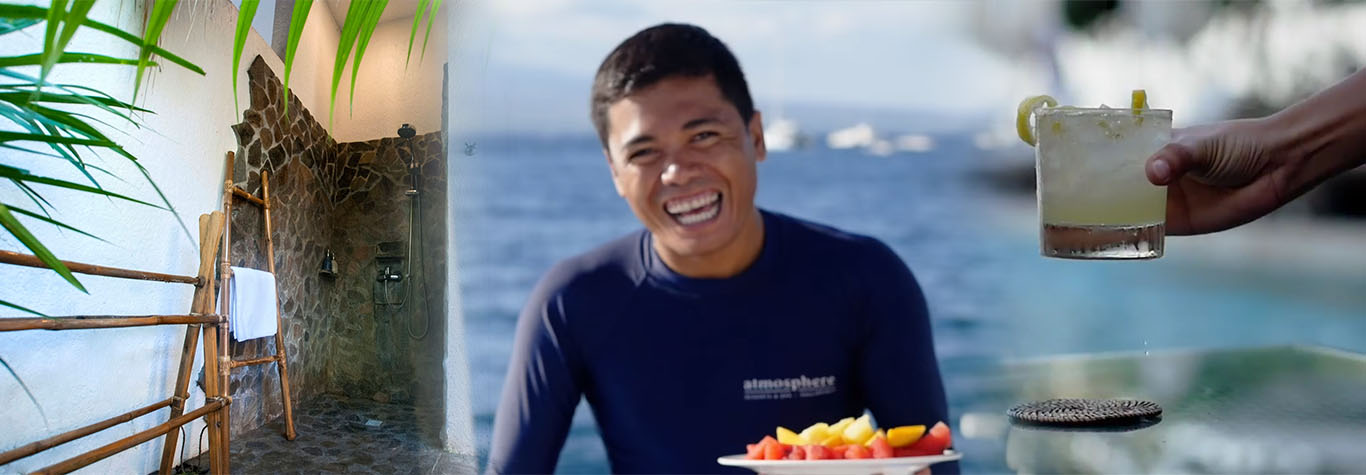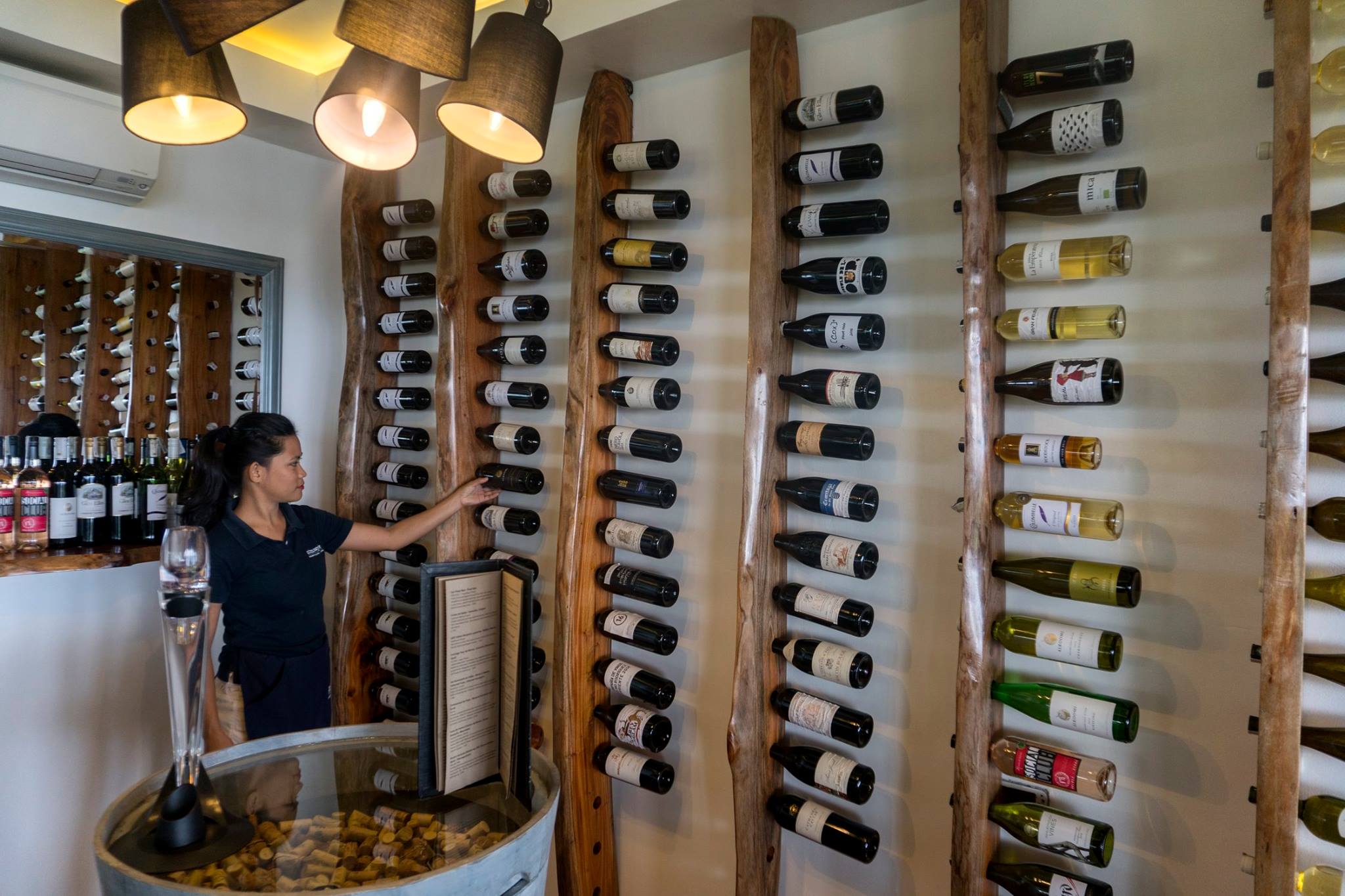The art of combining Filipino and Western plating – a match made in heaven?
In the world of culinary arts, the presentation of a dish is often as important as its taste. The art of food plating is an intricate dance of colors, textures, and arrangements. It elevates a meal from mere sustenance to a visual and gastronomic experience.
When it comes to balancing Filipino and Western plating styles, the marriage of these two culinary worlds extends beyond the flavors – to the very canvas upon which these masterpieces are presented.
Filipino flair and Western precision
Traditional Filipino cuisine is known for its generous and communal style of serving. Food is often presented in heaping portions with an emphasis on family-style dining. In contrast, Western plating tends to favor a more minimalist and precise approach, with an emphasis on negative space, balance, and intricate arrangements.
When these two styles collide, a harmonious contrast emerges. Picture a classic adobo transformed into a fine dining experience. The rich, dark sauce elegantly swirls around meticulously placed slices of meat, accompanied by artfully arranged microgreens. This plating respects the heartiness of Filipino dishes while presenting them with the finesse expected in Western culinary circles.
Textures and heights – crucial to plating
In Western food presentation, dishes are often layered or stacked to create visual interest. Let us apply this principle to a dish like “insaladang puso ng saging”, traditionally served in hearty chunks. It can be transformed it into an artful tower where each layer contributes to the visual appeal. For the un-initiated, “insaladang puso ng saging” is a local salad using boiled banana heart.
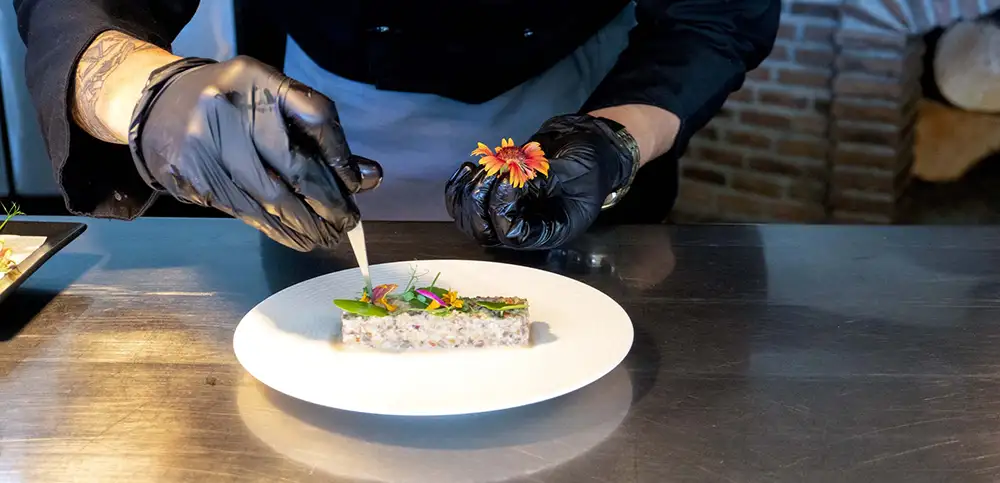
Puso ng saging is a Filipino dish made with banana heart and coconut milk
The “puso ng saging” is a classic Filipino dish made from banana heart and coconut milk. Western cuisine often utilizes techniques that create varying textures in a dish, and this can be applied to local dishes. Take, for example, a “caldereta” inspired dish made with a perfectly braised Angus beef short ribs. we serve it with caramelized leeks, roasted baby carrots, and pickled onion. The tenderness of the short ribs contrasts with the crunch of crisp vegetables, creating a dynamic textural experience on the plate.
The Atmosphere adobo – a marriage of different textures
No blog about Filipino cuisine is complete without mentioning the “adobo”. Adobo is a pork- or/and chicken based dish where the meat is marinated in vinegar, soy sauce, garlic, and other spices. At Atmosphere, we mix pork and chicken for our very own take on the traditional and very popular dish. Follow this link to our menus, the adobo can be found on the Breeze menu.
Western chefs utilize roasting to enhance flavors through caramelization and browning of the food’s surface. By applying this cooking method to our pork adobo, we give the dish an additional texture due to its crispy crackling. In addition to the pork, we present the adobo-glazed, braised, and fried chicken lollipop. The chicken undergoes two distinct cooking methods. First, we braise it to tenderize and allow flavor absorption, and second, we deep fry it to develop a crispy texture. The result is perfectly cooked meat infused with the bold flavors of adobo. To elevate the experience further, the dish is plated with a drizzle of reduced adobo sauce, succotash vegetables, mashed potato, and a quail egg. This food plating beautifully showcases the marriage of modern culinary techniques with traditional Filipino flavors. The result is both a visually appealing and gastronomically advanced experience.
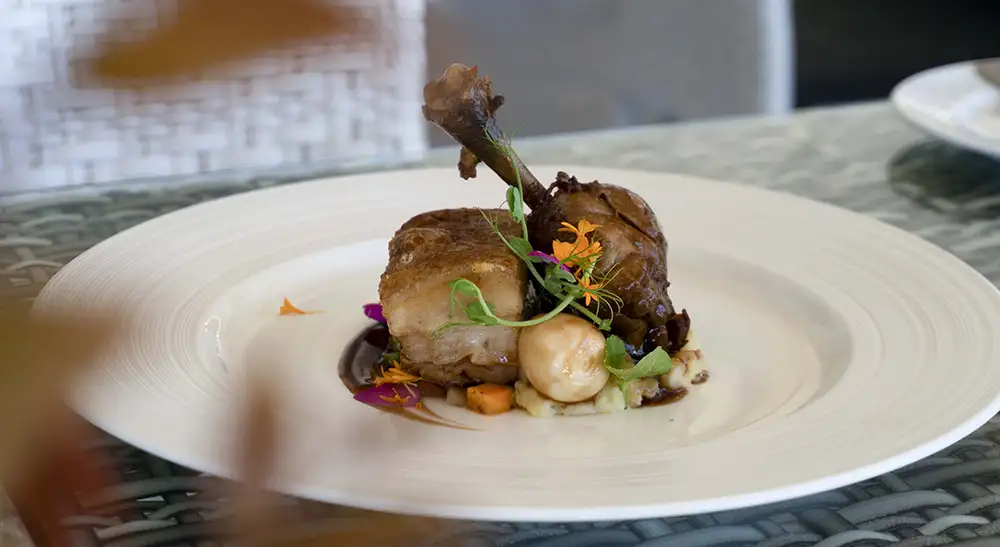
The chicken and pork adobo is one of the most celebrated dishes in the Philippines
As colorful as the country itself
Filipino cuisine is celebrated for its vibrant use of colors, often derived from natural ingredients. Philippine mangoes, for example, are known for exceptional sweetness and is a beloved element in Filipino cuisine. When incorporated in western desserts, like panna cotta and cheesecake, the dish becomes not only a symphony of flavors but also a visual masterpiece. Edible flowers and microgreens, a staple in Western plating, can be artfully scattered, adding both beauty and a touch of delicate flavor.
The cultural narrative on a plate
The art of food plating in Filipino and Western cuisine goes beyond aesthetics; it tells a cultural story. Each dish becomes a narrative that weaves together the threads of culinary heritage from both worlds. By doing this, we reflect the shared history and influences.
Whether it’s the meticulous arrangement of ingredients to create a visually stunning masterpiece, or the thoughtful incorporation of modern techniques into traditional recipes, Filipino and Western plating is a celebration of diversity, creativity, and the universal language of food.
As each dish emerges as a work of art on the plate, it invites diners to embark on a sensory journey that transcends cultural boundaries and celebrates the beauty of diversity in the world of gastronomy.
By Jun Tubog – Executive Chef and F&B manager at Atmosphere Resorts & Spa
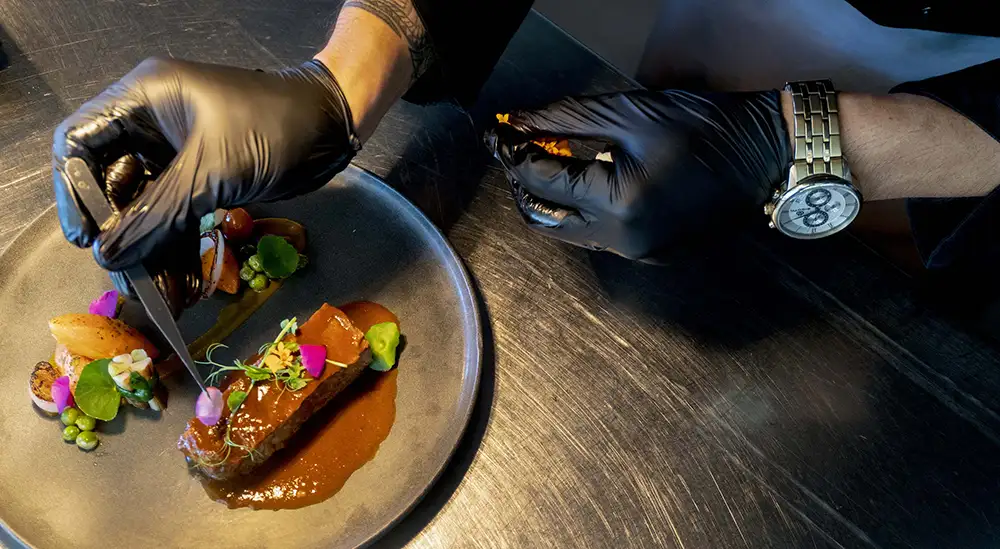
Adding colors such as flowers and microgreens, brings beauty and a touch of delicate flavor to the dish

